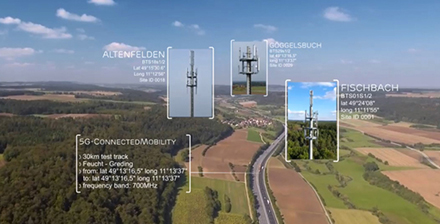|
As part of Ericsson’s 5G-ConnectedMobility project, tests were carried out in the areas of V2V, vehicle-to-infrastructure (V2I), digitalization of the railway infrastructure, and other applications using 5G technology. Members of the 5G-ConnectedMobility consortium are Ericsson; BMW Group; Deutsche Bahn; all three German mobile network operators (Deutsche Telekom, Telefónica Deutschland, and Vodafone); the Technical University Dresden 5G Lab in Germany, the Federal Highway Research Institute; and the Federal Regulatory Agency.

The Federal Ministry of Transport and Digital Infrastructure and the Bavarian Road Construction Administration support the project, which is based on a test track of approximately 30 km along the A9 motorway and a high-speed railway track between Nuremberg- Feucht and Greding in Bavaria, Germany. The ambition is to accelerate 5G research and development in Germany and in Europe as well as to facilitate the integration of technology requirements from various industries into upcoming international 5G-standardization activities.
For this purpose, 5G-ConnectedMobility operates within an independent infrastructure, and it is not dependent on any commercial network. The result is that 5G prototype applications can be installed and tested regularly in various network configurations at any time without restrictions. Test conditions hardly ever found in commercially operated live networks can be created.
In this context, Ericsson has received permission from the Federal Regulatory Agency to use frequencies from the 700-MHz band for the area of Nuremberg-Feucht to Greding and will act as a network operator. The dedicated Ericsson 5G mobile network allows live tests of real-time applications even under extreme network loads and with very high travel speeds.
Full article: IEEE Vehicular Technology Magazine, Volume 12, Number 1, March 2017 |